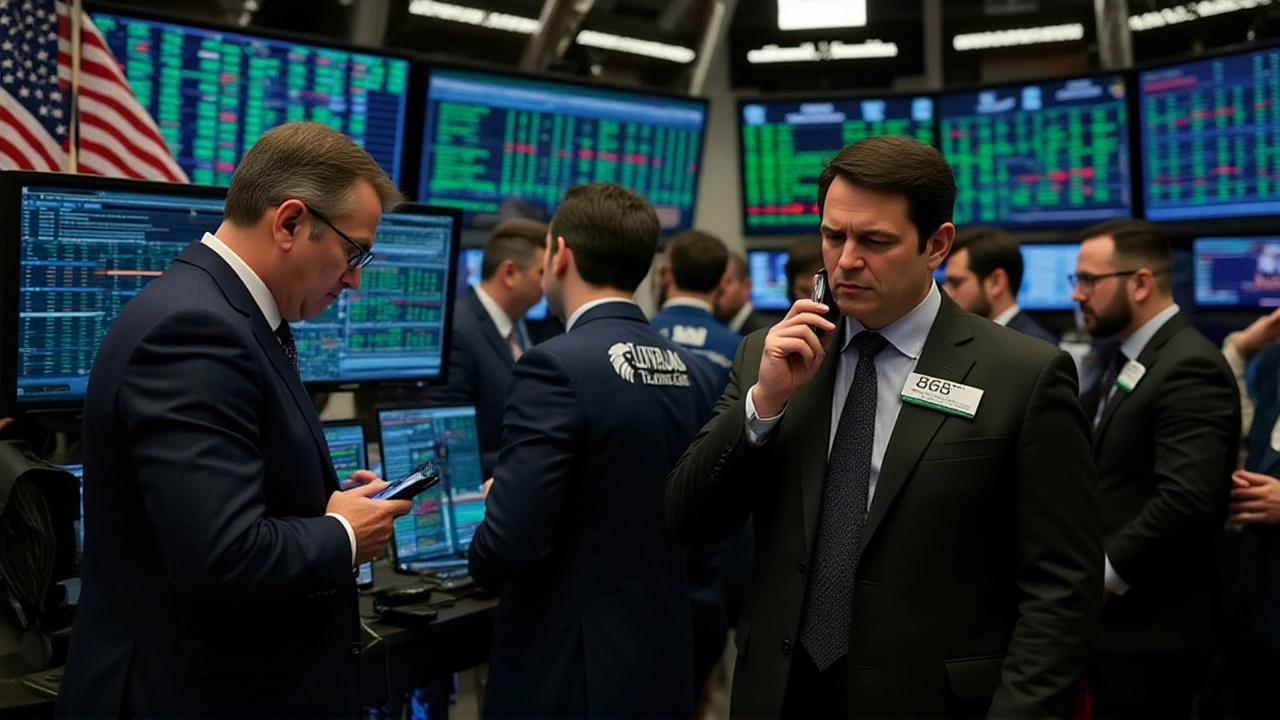On October 23, 2025, Hong Kong's Hang Seng Index slumped 4% for the week ending Oct 20, while Japan's Nikkei 225 shed nearly 1.3%, and the broader Asian markets wrestled with mixed signals from Washington and Tokyo.
What Drove the Divergence Across the Region?
In China, the Shanghai Composite Shanghai edged up 0.22% to 3,922 points, and the Shenzhen Component matched the gain, according to Trading Economics data released early Thursday. The modest rise contrasted sharply with Hong Kong, where heavy selling in heavyweight tech names pushed the Hang Seng down 0.2% to 25,738 on the day before the weekly tally.
The Japanese market, meanwhile, felt the sting of policy uncertainty. Prime Minister Sanae Takaichi is preparing a stimulus package worth nearly 14 trillion yen (about $92 billion), yet investors remain wary because SoftBank Group announced plans to fund AI projects via U.S.‑dollar and euro‑denominated bonds, sending its shares down more than 4%.
U.S. Monetary Policy and Trade Tensions
Across the Pacific, Jerome Powell testified before Congress on Oct 15, noting a weakening labor market. His remarks revived expectations of a rate cut and hinted the Federal Reserve might pause its balance‑sheet runoff. The comment lifted short‑term Treasury yields, but the dollar’s rally against the yen (now 152.37 per $1) kept pressure on export‑reliant Asian equities.
Adding to the headwinds, reports surfaced that Washington may tighten export controls on products made with U.S. software. The news knocked Chinese internet giants Tencent Holdings Limited and Alibaba Group Holding Limited each down roughly 7%, making them the biggest drags on the Hang Seng Composite.
Sector Rotation and Technical Signals
Investors in Hong Kong turned toward defensive, dividend‑rich state‑owned enterprises. The four major Chinese banks and three telecom operators posted gains, partially offsetting the tech sell‑off. Technical analysts noted the Hang Seng slipping below its 50‑day moving average and forming a corrective Wave A under Elliott Wave theory, with potential support near the 100‑day MA at 26,392 and a downside test of the August low at 24,372.
South Korea’s Kospi slipped 0.9% to 3,849.87 as U.S.–Korea trade talks made only modest progress. Meanwhile, Australia’s S&P/ASX 200 barely budged, adding under 0.1% to 9,032.80.
Spotlight on Taiwan’s Tech Rally
Amid the volatility, Taiwan’s market offered a silver lining. Accton Technology Corp. traded at NT$1,105, roughly 19.4% below its fair‑value estimate of NT$1,371, yet posted an 83.2% jump in earnings year‑over‑year and is projected to grow revenue by 24% annually – outpacing the island’s market average.
Another standout, Bizlink Holding Inc., priced at NT$1,060 against a fair value of NT$1,245 (a 14.8% discount), posted a 127.8% earnings surge last year. Its revenue streams span home appliances (NT$9.97 bn), industrial applications (NT$23.78 bn) and computing/transportation (NT$77.53 bn), positioning it for continued upside.
Analyst Takeaways and Forward Outlook
Webull analysts stress that Asian markets are navigating a “tightrope” of mixed data. They flag that a breach of the Hang Seng’s 100‑day MA could trigger a slide toward the August low, while a bounce might spark a rally toward the 20‑day MA at 26,392.
IG analysts warned, “Should the 100‑day MA fail to hold, the index may test August’s low at 24,372. A rebound above that level could re‑ignite buying interest, especially in undervalued state‑owned banks.”
On the monetary front, the British pound remains under pressure from rising UK unemployment, and the U.S. dollar shows volatility as China’s market interventions affect currency flows, according to Saxo Bank’s October 15 market analysis.
Key Facts
- Hang Seng down 4% weekly – weakest since April 2025.
- Shanghai Composite up 0.22% to 3,922 points.
- Nikkei 225 falls 1.3% to 48,683.84.
- Powell’s testimony fuels rate‑cut hopes.
- Taiwan’s Accton and Bizlink trade at sizeable discounts to fair value.
Frequently Asked Questions
How might the Hang Seng Index perform if it breaks the 100‑day moving average?
Analysts at IG say a break below the 100‑day MA could expose the index to a test of its August low around 24,372 points. Such a move would likely deepen the current corrective wave and could trigger short‑covering rallies in defensive sectors.
What are the implications of Jerome Powell’s testimony for Asian currencies?
Powell’s acknowledgment of a weakening U.S. labor market bolstered expectations of an upcoming rate cut, which typically weakens the dollar. A softer dollar can aid export‑driven Asian economies, but lingering trade frictions may blunt any broad‑based currency rally.
Why did Tencent and Alibaba fall 7% each on the same day?
Both companies were hit by fresh reports that Washington is considering tighter export controls on software‑enabled products destined for China. The fear of disrupted supply chains and reduced overseas demand spooked investors, making the two stocks the biggest detractors on the Hang Seng.
What does the performance of Accton Technology suggest about Taiwan’s tech sector?
Accton’s stock trading well below its fair‑value estimate while delivering 83% earnings growth signals that many Taiwanese tech firms remain undervalued. Analysts see this as a buying opportunity, especially as the company’s cash‑flow outlook outpaces the broader market.
How could Japan’s upcoming stimulus package affect the Nikkei?
If Prime Minister Sanae Takaichi successfully rolls out the 14 trillion‑yen stimulus, it could lift consumer confidence and support corporate earnings, potentially stabilising the Nikkei after its recent dip.

